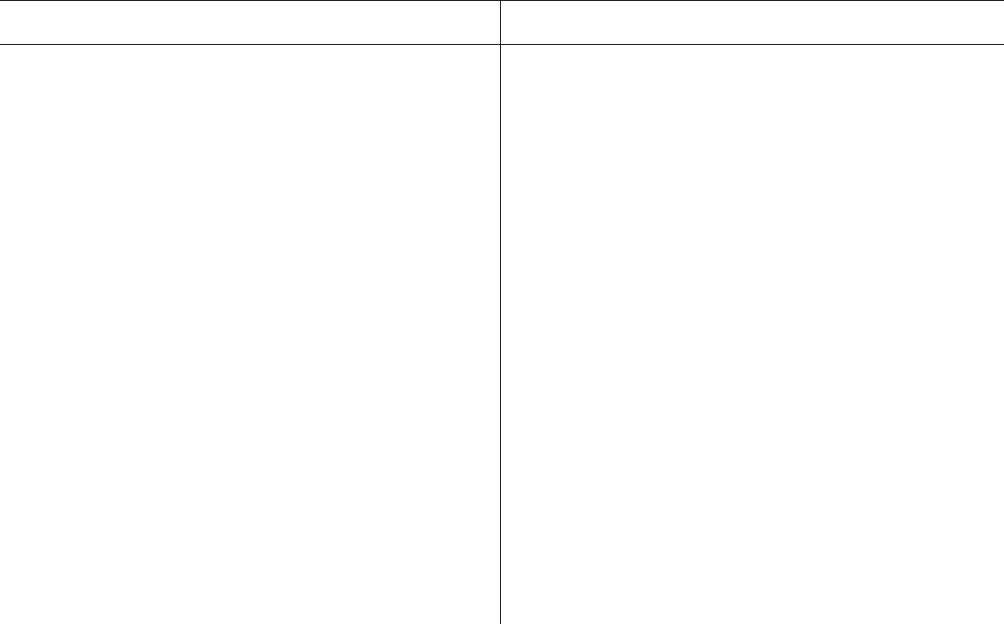Grossnick Roy A. United States Naval Aviation, 1910-1995
Подождите немного. Документ загружается.


like ship’s names, are reused again and again. If there
is a break in the active status of a unit designation as a
result of a disestablishment, then there is no connec-
tion between the units bearing the same designation.
Another common problem area involved squadron
insignia. The lineage or history of a squadron cannot
be traced using only its insignia, because the same
insignia may have been adopted and approved for
official use by more than one squadron during differ-
ent time frames. The insignia of a disestablished
squadron may be officially approved for use by anoth-
er squadron, but this does not confer upon the new
squadron the right to the previous unit’s history and
lineage. The following outline of the Jolly Roger
insignia is an example of the confusion that results if
one attempts to trace the lineage and history of a
squadron insignia without considering other factors.
VF-17 was established on 1 January 1943, and dur-
ing World War II it produced an outstanding record as
a fighter squadron. The Jolly Roger insignia for VF-17
was adopted during World War II. On 15 November
1946, all Navy squadrons were redesignated and VF-17
became VF-5B. Subsequently, it was redesignated VF-
61 on 28 April 1948, and then disestablished on 15
April 1959. Commander Hoppe was the Commanding
Officer of VF-61 when it was disestablished. The Jolly
Roger insignia had been used by VF-17/VF-5B/VF-61
from 1943 until 15 April 1959.
On 2 July 1955, VA-86 was established and on the
same day was redesignated VF-84. This squadron was
equipped with the FJ Fury and adopted the nickname
Vagabonds. An insignia consisting of a lightning bolt
striking the world in the area of Norfolk, Va., with a
sword behind the bolt, was approved on 27
September 1955. The squadron operated under this
name and insignia until it replaced the FJs with F8U
Crusaders in 1959. Commander Hoppe assumed com-
mand of VF-84 two days after the disestablishment of
VF-61, the Jolly Roger squadron. He initiated the
request to have VF-84 adopt the old Jolly Roger
insignia, which had been used by VF-61 and was no
longer active. This request was approved by CNO on
1 April 1960. There is no direct connection between
The lineage and history of U.S. Naval Aviation
squadrons has been a source of confusion since the
birth of Naval Aviation in 1911. Much of this confusion
arose from the terminology used by the Navy, the lack
of a consistent policy in selecting the alpha-numeric
designations for squadrons, constantly reusing the
same letter and numeric designations, and the many
establishments, redesignations and disestablishments
of aviation squadrons.
When dealing with a squadron’s lineage, the only
correct terms to use are establishment, disestablish-
ment and redesignation. The terms commissioning and
establishment have been used interchangeably for
years and that is incorrect. Only ships are commis-
sioned, decommissioned and receive commissioning
pennants. Squadrons have establishment and disestab-
lishment ceremonies.
A unit’s history and lineage begins when it is estab-
lished and ends at the time it is disestablished.
Determining a squadron’s “family tree” may seem cut
and dried, but that is not the case. A squadron may
undergo numerous redesignations during the period
between its establishment and disestablishment. A
newly established squadron bearing the same designa-
tion of a unit that had previously existed may carry on
the traditions of the old organization but it cannot
claim the history or lineage of the previous unit. The
same is true of U. S. Navy ships and, thus, the ratio-
nale for such a policy becomes apparent. For exam-
ple,
Ranger (CV 61) is the seventh ship to bear the
name Ranger and may carry on the traditions of the
previous six ships. Ranger (CV 61) is obviously not
the same Continental Navy Ship Ranger commanded
by Captain John Paul Jones during the War of
Independence. The history of Ranger (CV 61) begins
with its commissioning date, not with the commission-
ing date of the first Ranger
The most recent squadron with the designation
Fighter Squadron One (VF-1) was established 1
October 1972 and disestablished 1 October 1993. It
was the seventh squadron in the Navy to be designat-
ed VF-1. This squadron is not the same VF-1 that used
the designation for the first time in 1922. Designations,
UNITED STATES NAVAL AVIATION 1910–1995 691
691
APPENDIX 24
Current Squadron Lineage List
How to Trace Squadron Lineage

the former Jolly Roger squadron (VF-17/VF-5B/VF-61)
and VF-84, which adopted the Jolly Roger insignia. To
further complicate a review of the records, there have
been other squadrons with the designation VF-84.
During World War II, a VF-84 was established on 1
May 1944, and disestablished 8 October 1945. Naval
Air Reserve squadron VF-921 was called to active duty
1 February 1951, and was redesignated VF-84 on 4
February 1954. This squadron then became VA-86 on 2
July 1955. This occurred on the same day, the current
Jolly Roger squadron was established as VA-86 and
immediately redesignated VF-84. Neither of these two
VF-84 squadrons had any connection with the original
Jolly Rogers. Thus, the present VF-84 operating with
the insignia and title of Jolly Roger can lay claim to the
traditions of VF-17, VF-5B and VF-61, if it wishes to do
so, but can only claim a history which commenced on
2 July 1955, and it is not a direct descendant of the
original Jolly Roger squadron.
A squadron’s history and lineage covers only the
period during which a unit is officially declared active
(established by CNO), has personnel assigned to it,
and is listed in the Naval Aeronautical Organization.
When a squadron is disestablished, its history and lin-
eage ends. If a squadron is redesignated while it is
active, the lineage and history of the unit is carried on
by the newly redesignated squadron. The following is
an example of what occurs when a squadron is redes-
ignated and its lineage and history remain unbroken.
The current VFA-25 was originally established as
Torpedo Squadron 17 (VT-17) on 1 January 1943. On
15 November 1946, VT-17 was redesignated VA-6B
and carried this designation until 27 April 1948, when
it was redesignated VA-65. On 1 July 1959, VA-65 was
redesignated VA-25 and the unit remained VA-25 until
it was redesignated VFA-25 on 1 July 1983. The history
and lineage of the present VFA-25 may be traced to 1
January 1943, because there was no break in active
duty status of the squadron, even though its designa-
tion changed four times.
The current VFA-106 provides an example of what
happens when a squadron is disestablished and then,
years later, the same number is used again. This
squadron was established at NAS Cecil Field on 27 April
1984. VFA-106 adopted the old insignia of VA-106 and
had it officially approved. The squadron may carry on
the traditions of the old VA-106, but it cannot trace its
lineage and history back to VA-106. The list of com-
manding officers for VA-106 is not part of the list of
commanding officers for VFA-106. The history of VA-106
came to an end on 7 November 1969, when it was dis-
established and its personnel were transferred to other
duty stations. At this time, VA-106 was removed from the
active list in the Naval Aeronautical Organization.
The following is a list of the current Navy squadrons
as of 31 December 1995:
692 UNITED STATES NAVAL AVIATION 1910–1995
Helicopter Combat Support Squadron
HC-2* HC-2 Established 1 Apr 1987
HC-3 HC-3 Established 1 Sep 1967
HC-4* HC-4 Established 6 May 1983
HC-5* HC-5 Established 3 Feb 1984
HC-6 HC-6 Established 1 Sep 1967
HC-8 HC-8 Established 3 Dec 1984
HC-11 HC-11 Established 1 Oct 1977
HC-85 HS-85 Established 1 Jul 1970
HS-85 Redesignated HC-85 1 Oct 1994
Helicopter Combat Support Special Squadron
HCS-4 HAL-4 Established 1 Jul 1976
HAL-4 Redesignated HCS-4 1 Oct 1989
HCS-5 HCS-5 Established 1 Oct 1988
Helicopter Mine Countermeasures Squadron
HM-14 HM-14 Established 12 May 1978
HM-15 HM-15 Established 2 Jan 1987
Helicopter Anti-Submarine Squadron
HS-1 HS-1 Established 3 Oct 1951
HS-2 HS-2 Established 7 Mar 1952
HS-3 HS-3 Established 18 Jun 1952
HS-4 HS-4 Established 30 Jun 1952
HS-5 HS-5 Established 3 Jan 1956
HS-6 HS-6 Established 1 Jun 1956
HS-7* HS-7 Established 15 Dec 1969
HS-8* HS-8 Established 1 Nov 1969
HS-10 HS-10 Established 1 Jul 1960
Squadron Changes in Squadron Date of Squadron Changes in Squadron Date of
Designation Designations Change Designation Designations Change

VA-7A Redesignated VA-74 27 Jul 1948
VA-74 Redesignated VA-75 15 Feb 1950
VA-115 VT-11 Established 10 Oct 1942
VT-11 Redesignated VA-12A 15 Nov 1946
VA-12A Redesignated VA-115 15 Jul 1948
VA-115 was in an inactive status
from Aug 1967 to 1 Jan 1970.It
was not disestablished during this
time frame and had a very limited
number of personnel assigned to
the squadron which was located at
NAS Lemoore during the inactive
period.
VA-115 Reactivated 1 Jan 1970
VA-165 VA-165 Established 1 Sep 1960
VA-196 VF-153 Established 15 Jul 1948
VF-153 Redesignated VF-194 15 Jul 1950
VF-194 Redesignated VA-196 4 May 1955
Tactical Electronic Warfare Squadron
VAQ-129 VAH-10 Established 1 May 1961
VAH-10 Redesignated VAQ-129 1 Sep 1970
VAQ-130 VW-13 Established 1 Sep 1959
VW-13 Redesignated VAQ-130 1 Oct 1968
VAQ-131 VP-931 Reserve squadron
to active duty 2 Sep 1950
VP-931 Redesignated VP-57 4 Feb 1953
VP-57 Redesignated VAH-4 3 Jul 1956
VAH-4 Redesignated VAQ-131 1 Nov 1968
VAQ-132 VAH-2 Established 1 Nov 1955
VAH-2 Redesignated VAQ-132 1 Nov 1968
VAQ-134 VAQ-134 Established 17 Jun 1969
VAQ-135 VAQ-135 Established 15 May 1969
VAQ-136 VAQ-136 Established 6 Apr 1973
VAQ-138 VAQ-138 Established 27 Feb 1976
VAQ-139 VAQ-139 Established 1 Jul 1983
VAQ-140 VAQ-140 Established 1 Oct 1985
VAQ-141 VAQ-141 Established 1 Jul 1987
VAQ-209 VAQ-209 Established 1 Oct 1977
HS-11 HS-11 Established 27 Jun 1957
HS-14 HS-14 Established 10 Jul 1984
HS-15 HS-15 Established 29 Oct 1971
HS-75 HS-75 Established 1 Jun 1970
Helicopter Anti-Submarine Squadron Light
HSL-37 HSL-37 Established 3 Jul 1975
HSL-40 HSL-40 Established 4 Oct 1985
HSL-41 HSL-41 Established 21 Jan 1983
HSL-42 HSL-42 Established 5 Oct 1984
HSL-43 HSL-43 Established 5 Oct 1984
HSL-44 HSL-44 Established 21 Aug 1986
HSL-45 HSL-45 Established 3 Oct 1986
HSL-46 HSL-46 Established 7 Apr 1988
HSL-47 HSL-47 Established 25 Sep 1987
HSL-48 HSL-48 Established 7 Sep 1989
HSL-49 HSL-49 Established 23 Mar 1990
HSL-51 HSL-51 Established 1 Oct 1991
HSL-84 HS-84 Established 1 Jul 1970
HS-84 Redesignated HSL-84 1 Mar 1984
HSL-94 HSL-94 Established 1 Oct 1985
Helicopter Training Squadron
HT-8 HTU-1 Established 3 Dec 1950
HTU-1 Redesignated HTG-1 Mar 1957
HTG-1 Redesignated HT-8 1 Jul 1960
HT-18 HT-18 Established 1 Mar 1972
Attack Squadron
VA-34* VA-34 Established 1 Jan 1970
VA-75* VB-18 Established 20 Jul 1943
VB-18 Redesignated VA-7A 15 Nov 1946
UNITED STATES NAVAL AVIATION 1910–1995 693
Squadron Changes in Squadron Date of Squadron Changes in Squadron Date of
Designation Designations Change Designation Designations Change

Carrier Airborne Early Warning Squadron
VAW-77 VAW-77 Established 1 Oct 1995
VAW-78 VAW-78 Established 1 Jul 1970
VAW-112 VAW-112 Established 20 Apr 1967
VAW-113 VAW-113 Established 20 Apr 1967
VAW-115 VAW-115 Established 20 Apr 1967
VAW-116 VAW-116 Established 20 Apr 1967
VAW-117 VAW-117 Established 1 Jul 1974
VAW-120 RVAW-120 Established 1 Jul 1967
RVAW-120 Redesignated VAW-120 1 May 1983
VAW-121 VAW-121 Established 1 Apr 1967
VAW-122 VAW-122 Established 1 Apr 1967
VAW-123 VAW-123 Established 1 Apr 1967
VAW-124 VAW-124 Established 1 Sep 1967
VAW-125 VAW-125 Established 1 Oct 1968
VAW-126 VAW-126 Established 1 Apr 1969
Composite Squadron
VC-6* VU-6 Established 1 Mar 1952
VU-6 Redesignated VC-6 1 Jul 1965
VC-8 GMSRON-2 Established 1 Jul 1958
(Guided Missile Service
Squadron 2)
GMSRON-2 Redesignated VU-8 1 Jul 1960
VU-8 Redesignated VC-8 1 Jul 1965
Fighter Squadron
VF-2* VF-2 Established 14 Oct 1972
VF-11* VF-43 Established 1 Sep 1950
VF-43 Redesignated VF-11 16 Feb 1959
VF-11 adopted the insignia used
by the previous VF-11 which had
been disestablished on 15 Feb
1959.The newly designated VF-11
(16 Feb 1959) carried on the
insignia and traditions of the
Red Ripper squadron dating back
to 1 Feb 1927,but not the
lineage.
VF-14* Air Detachment,Pacific Fleet
Established Sep 1919
Became VT-5, an element of
AirDet,PacFlt 15 Jun 1920
VT-5 Redesignated VP-4-1 7 Sep 1921
VP-4-1 Redesignated VF-4 23 Sep 1921
VF-4 Redesignated VF-1 1 Jul 1922
VF-1 Redesignated VF-lB 1 Jul 1927
VF-lB Redesignated VB-2B 1 Jul 1934
VB-2B Redesignated VB-3 1 Jul 1937
VB-3 Redesignated VB-4 1 Jul 1939
VB-4 Redesignated VS-41 15 Mar 1941
VS-41 Redesignated VB-41 1 Mar 1943
VB-41 Redesignated VB-4 4 Aug 1943
VB-4 Redesignated VA-1A 15 Nov 1946
VA-1A Redesignated VA-14 2 Aug 1948
VA-14 Redesignated VF-14 15 Dec 1949
VF-21* VF-81 Established 2 Mar 1944
VF-81 Redesignated VF-13A 15 Nov 1946
VF-13A Redesignated VF-131 2 Aug 1948
VF-131 Redesignated VF-64 15 Feb 1950
VF-64 Redesignated VF-21 1 Jul 1959
VF-24* VF-211 Established Jun 1955
VF-211 Redesignated VF-24 9 Mar 1959
VF-31* VF-1B Established 1 Jul 1935
VF-1B Redesignated VF-6 1 Jul 1937
VF-6 Redesignated VF-3 15 Jul 1943
VF-3 Redesignated VF-3A 15 Nov 1946
VF-3A Redesignated VF-31 7 Aug 1948
VF-32* VBF-3 Established 1 Feb 1945
VBF-3 Redesignated VF-4A 15 Nov 1946
VF-4A Redesignated VF-32 7 Aug 1948
VF-41* VF-41 Established 1 Sep 1950
VF-45* VA-45 Established 15 Feb 1963
VA-45 Redesignated VF-45 7 Feb 1985
VF-101 VF-101 Established 1 May 1952
VF-102* VA-36 Established 1 Jul 1955
VA-36 Redesignated VF-102 1 Jul 1955
(It should be noted that on the
same day; 1 Jul 1955,the old
694 UNITED STATES NAVAL AVIATION 1910–1995
Squadron Changes in Squadron Date of Squadron Changes in Squadron Date of
Designation Designations Change Designation Designations Change

VF-81 Redesignated VA-81 1 Jul 1959
VA-81 Redesignated VFA-81 4 Feb 1988
VFA-82 VA-82 Established 1 May 1967
VA-82 Redesignated VFA-82 15 Jul 1987
VFA-83 VF-916 Reserve squadron
called to active duty 1 Feb 1951
VF-916 Redesignated VF-83 4 Feb 1953
VF-83 Redesignated VA-83 1 Jul 1955
VA-83 Redesignated VFA-83 1 Mar 1988
VFA-86* VF-921 Reserve squadron
called to active duty 1 Feb 1951
VF-921 Redesignated VF-84 4 Feb 1953
VF-84 Redesignated VA-86 1 Jul 1955
VA-86 Redesignated VFA-86 15 Jul 1987
VFA-87 VA-87 Established 1 Feb 1968
VA-87 Redesignated VFA-87 1 May 1986
VFA-94* VF-94 Established 26 Mar 1952
VF-94 Redesignated VA-94 1 Aug 1958
VA-94 Redesignated VFA-94 24 Jan 1991
VFA-97 VA-97 Established 1 Jun 1967
VA-97 Redesignated VFA-97 24 Jan 1991
VFA-105* VA-105 Established 4 Mar 1968
VA-105 Redesignated VFA-105 17 Dec 1990
VFA-106 VFA-106 Established 27 Apr 1984
VFA-113 VF-113 Established 15 Jul 1948
VF-113 Redesignated VA-113 Mar 1956
VA-113 Redesignated VFA-113 25 Mar 1983
VFA-125 VFA-125 Established 13 Nov 1980
VFA-127 VA-127 Established 15 Jun 1962
VA-127 Redesignated VFA-127 1 Mar 1987
VFA-131 VFA-131 Established 3 Oct 1983
VFA 136 VFA-136 Established 1 Jul 1985
VFA-137 VFA-137 Established 1 Jul 1985
VFA-146 VA-146 Established 1 Feb 1956
VA-146 Redesignated VFA-146 21 Jul 1989
VFA-147 VA-147 Established 1 Feb 1967
VA-147 Redesignated VFA-147 20 Jul 1989
VFA-151 VF-23 Established 6 Aug 1948
VF-102 was redesignated VA-36.
This unit is separate from the
VA-36 that was established on
1 Jul 1955 and then immediately
redesignated VF-102.)
VF-103* VF-103 Established 1 May 1952
VF-143* VF-871 Reserve squadron
called to active duty 20 Jul 1950
VF-871 Redesignated VF-123 4 Feb 1953
VF-123 Redesignated VF-53 12 Apr 1958
VF-53 Redesignated VF-143 20 Jun 1962
VF-154 VF-837 Reserve squadron
called to active duty 1 Feb 1951
VF-837 Redesignated VF-154 4 Feb 1953
VF-201 VF-201 Established 25 Jul 1970
VF-211* VB-74 Established 1 May 1945
VB-74 Redesignated VA-1B 15 Nov 1946
VA-1B Redesignated VA-24 1 Sep 1948
VA-24 Redesignated VF-24 1 Dec 1949
VF-24 Redesignated VF-211 9 Mar 1959
VF-213 VF-213 Established 22 Jun 1955
Strike-Fighter Squadron
VFA-15 VA-67 Established 1 Aug 1968
VA-67 Redesignated VA-15 2 Jun 1969
VA-15 Redesignated VFA-15 1 Oct 1968
VFA-22 VF-63 Established 28 Jul 1948
VF-63 Redesignated VA-63 Mar 1956
VA-63 Redesignated VA-22 1 Jul 1959
VA-22 Redesignated VFA-22 4 May 1990
VFA-25 VT-17 Established 1 Jan 1943
VT-17 Redesignated VA-6B 15 Nov 1946
VA-6B Redesignated VA-65 27 Jul 1948
VA-65 Redesignated VA-25 1 Jul 1959
VA-25 Redesignated VFA-25 1 Jul 1983
VFA-27 VA-27 Established 1 Sep 1967
VA-27 Redesignated VFA-27 24 Jan 1991
VFA-37 VA-37 Established 1 Jul 1967
VA-37 Redesignated VFA-37 28 Nov 1990
VFA-81 VA-66 Established 1 Jul 1955
VA-66 Redesignated VF-81
on same day 1 Jul 1955
UNITED STATES NAVAL AVIATION 1910–1995 695
Squadron Changes in Squadron Date of Squadron Changes in Squadron Date of
Designation Designations Change Designation Designations Change

VF-23 Redesignated VF-151 23 Feb 1959
VF-151 Redesignated VFA-151 1 Jun 1986
VFA-192 VF-153 Established 26 Mar 1945
VF-153 Redesignated VF-15A 15 Nov 1946
VF-15A Redesignated VF-151 15 Jul 1948
VF-151 Redesignated VF-192 15 Feb 1950
VF-192 Redesignated VA-192 15 Mar 1956
VA-192 Redesignated VFA-192 10 Jan 1985
VFA-195 VT-19 Established 15 Aug 1943
VT-19 Redesignated VA-20A 15 Nov 1946
VA-20A Redesignated VA-195 24 Aug 1948
VA-195 Redesignated VFA-195 1 Apr 1985
VFA-203 VA-203 Established 1 Jul 1970
VA-203 Redesignated VFA-203 1 Oct 1989
VFA-204 VA-204 Established 1 Jul 1970
VA-204 Redesignated VFA-204 1 May 1991
Fighter Squadron Composite
VFC-12* VC-12 Established 1 Sep 1973
VC-12 Redesignated VFC-12 22 Apr 1988
VFC-13* VC-13 Established 1 Sep 1973
VC-13 Redesignated VFC-13 22 Apr 1988
Patrol Squadron
VP-1* VB-128 Established 15 Feb 1943
VB-128 Redesignated VPB-128 1 Oct 1944
VPB-128 Redesignated VP-128 15 May 1946
VP-128 Redesignated VP-ML-1 15 Nov 1946
VP-ML-1 Redesignated VP-1 1 Sep 1948
VP-4* VB-144 Established 1 Jul 1943
VB-144 Redesignated VPB-144 1 Oct 1944
VPB-144 Redesignated VP-144 15 May 1946
VP-144 Redesignated VP-ML-4 15 Nov 1946
VP-ML-4 Redesignated VP-4 1 Sep 1948
VP-5* VP-17F (VP-17) Established 2 Jan 1937
VP-17 Redesignated VP-42 1 Jul 1939
VP-42 Redesignated VB-135 15 Feb 1943
VB-135 Redesignated VPB-135 1 Oct 1944
VPB-135 Redesignated VP-135 15 May 1946
VP-135 Redesignated VP-ML-5 15 Nov 1946
VP-ML-5 Redesignated VP-5 1 Sep 1948
VP-8* VP-201 Established 1 Sep 1942
VP-201 Redesignated VPB-201 1 Oct 1944
VPB-201 Redesignated VP-201 15 May 1946
VP-201 Redesignated VP-MS-1 15 Nov 1946
VP-MS-1 Redesignated VP-ML-8 5 Jun 1947
VP-ML-8 Redesignated VP-8 1 Sep 1948
VP-9* VP-9 Established 15 Mar 1951
VP-10* VP-10 Established 19 Mar 1951
VP-11* VP-11 Established 15 May 1952
VP-16* VP-741 Reserve squadron
called to active duty 1 May 1951
VP-741 Redesignated VP-16 4 Feb 1953
VP-26* VB-114 Established 26 Aug 1943
VB-114 Redesignated VPB-114 1 Oct 1944
VPB-114 Redesignated VP-114 15 May 1946
VP-114 Redesignated VP-HL-6 15 Nov 1946
VP-HL-6 Redesignated VP-26 1 Sep 1948
VP-30 VP-30 Established 30 Jun 1960
VP 40* VP-40 Established 20 Jan 1951
VP-45* VP-205 Established 1 Nov 1942
VP-205 Redesignated VPB-205 1 Oct 1944
VPB-205 Redesignated VP-205 15 May 1946
VP-205 Redesignated VP-MS-5 15 Nov 1946
VP-MS-5 Redesignated VP-45 1 Sep 1948
VP-46 VP-5S Established 1 Sep 1931
VP-5S Redesignated VP-5F 1 Apr 1933
VP-5F Redesignated VP-5 1937
VP-5 Redesignated VP-33 1 Jul 1939
VP-33 Redesignated VP-32 1 Jul 1941
VP-32 Redesignated VPB-32 1 Oct 1944
VPB-32 Redesignated VP-32 15 May 1946
VP-32 Redesignated VP-MS-6 15 Nov 1946
VP-MS-6 Redesignated VP-46 1 Sep 1948
VP-47 VP-27 Established 1 Jun 1944
VP-27 Redesignated VPB-27 1 Oct 1944
VPB-27 Redesignated VP-27 15 May 1946
VP-27 Redesignated VP-MS-7 15 Nov 1946
VP-MS-7 Redesignated VP-47 1 Sep 1948
VP-62 VP-62 Established 1 Nov 1970
VP-64 VP-64 Established 1 Nov 1970
VP-65 VP-65 Established 16 Nov 1970
696 UNITED STATES NAVAL AVIATION 1910–1995
Squadron Changes in Squadron Date of Squadron Changes in Squadron Date of
Designation Designations Change Designation Designations Change

VR-61 VR-61 Established 1 Oct 1982
VR-62 VR-62 Established 1 Jul 1985
Fleet Tactical Support Squadron
VRC-30 VR-30 Established 1 Oct 1966
VR-30 Redesignated VRC-30 1 Oct 1978
VRC-40 VRC-40 Established 1 Jul 1960
Air Anti-Submarine Squadron
VS-21* CVEG-41 Established 26 Mar 1945
CVEG-41 Redesignated CVEG-1 15 Nov 1946
CVEG-1 Redesignated VC-21 1 Sep 1948
VC-21 Redesignated VS-21 23 Apr 1950
VS-22* VS-22 Established 18 May 1960
VS-24* VS-24 Established 25 May 1960
VS-29 VS-29 Established 1 Apr 1960
VS-30* VS-801 Reserve squadron
called to active duty 9 Apr 1951
VS-801 Redesignated VS-30 4 Feb 1953
VS-31* VC-31 Established 28 Sep 1948
VC-31 Redesignated VS-31 20 Apr 1950
VS-32 VC-32 Established 31 May 1949
VC-32 Redesignated VS-32 20 Apr 1950
VS-35* VS-35 Established 4 Apr 1991
VS-38* VC-892 Reserve sqdn.Activated 20 Jul 1950
VC-892 Redesignated VS-892 4 Aug 1950
VS-892 Reserve squadron
called to active duty 4 Aug 1950
VS-892 Redesignated VS-38 4 Feb 1953
VS-41* VS-41 Established 30 Jun 1960
Training Squadron
VT-2 BTG-2 Redesignated VT-2 1 May 1960
(Basic Training Group-2)
VT-3 BTG-3 Redesignated VT-3 1 May 1960
VT-4 BTG-9 Redesignated VT-4 1 May 1960
VP-66 VP-66 Established 1 Nov 1970
VP-68 VP-68 Established 1 Nov 1970
VP-69 VP-69 Established 1 Nov 1970
VP-91* VP-91 Established 1 Nov 1970
VP-92* VP-92 Established 1 Nov 1970
VP-94* VP-94 Established 1 Nov 1970
Patrol Squadron Special Unit
VPU-1 VPU-1 Established 1 Jul 1982
VPU-2 VPU-2 Established 1 Jul 1982
Fleet Air Reconnaissance Squadron
VQ-1 VQ-1 Established 1 Jun 1955
VQ-2 VQ-2 Established 1 Sep 1955
VQ-3 VQ-3 Established 1 Jul 1968
VQ-4 VQ-4 Established 1 Jul 1968
VQ-5 VQ-5 Established 15 Apr 1991
VQ-6 VQ-6 Established 5 Aug 1991
Fleet Logistic Support Squadron
VR-46 VR-46 Established 1 Mar 1981
VR-48 VR-48 Established 1 Oct 1980
VR-52* VR-52 Established 24 Jun 1972
VR-53 VR-53 Established 1 Oct 1992
VR-54 VR-54 Established 1 Jun 1991
VR-55 VR-55 Established 1 Apr 1976
VR-56 VR-56 Established 1 Jul 1976
VR-57 VR-57 Established 1 Nov 1977
VR-58 VR-58 Established 1 Nov 1977
VR-59 VR-59 Established 1 Oct 1982
UNITED STATES NAVAL AVIATION 1910–1995 697
Squadron Changes in Squadron Date of Squadron Changes in Squadron Date of
Designation Designations Change Designation Designations Change

VT-6 Multi-Engine Training Group,
Whiting Field
Redesignated VT-6 1 May 1960
VT-7 BTG-7 Activated 1 Jun 1958
BTG-7 Redesignated VT-7 1 Jul 1960
VT-10 BNAO School Redesignated VT-10 15 Jan 1968
Basic Naval Aviation Officers
School was established within
the training department of NAS
Pensacola in June 1960.BNAO
School became a separate com-
mand under the Chief of Naval
Air Training 15 Jan 1968.
VT-19 VT-19 Established 2 Aug 1971
VT-21 ATU-202 Redesignated VT-21 1 May 1960
(Advanced Training Unit-202)
VT-22 ATU-212 Redesignated VT-22 1 May 1960
VT-23 ATU-222 Established Nov 1958
ATU-222 Redesignated VT-23 1 May 1960
VT-27 ATU-402 Redesignated VT-27 1 Jul 1960
VT-28 ATU-611 Redesignated VT-28 1 May 1960
VT-31 ATU-601 Redesignated VT-31 1 May 1960
VT-86 VT-86 Established 5 Jun 1972
Air Test and Evaluation Squadron (VX)
Antartic Development Squadron (VXE)
VX-1 Established as Aircraft
Antisubmarine Development
Detachment,Atlantic Fleet 1 Apr 1943
Aircraft Antisubmarine
Development Detachment became
part of a new unit called
Antisubmarine Development Det,
Atlantic Fleet 17 Sep 1943
Antisubmarine Development Det,
Atlantic Fleet redesignated VX-1 15 Mar 1946
VXE-6 VX-6 Established 17 Jan 1955
VX-6 Redesignated VXE-6 1 Jan 1969
VX-9 VX-9 Established 30 Apr 1994
698 UNITED STATES NAVAL AVIATION 1910–1995
Squadron Changes in Squadron Date of Squadron Changes in Squadron Date of
Designation Designations Change Designation Designations Change
* Previous squadrons have been assigned this designation.

Essex
(CV 9) with CVG-5 (26 Jun 1951—25 Mar 1952)
Squadron Aircraft Tail Code
VF-51 F9F-2 S
VF-172 F2H-2 R
VF-53 F4U-4/B S
VF-54 AD-2/4/L/Q S
VC-3 Det B F4U-5NL NP
VC-11 Det B AD-4W ND
VC-35 Det B AD-4NL NR
VC-61 Det B F9F-2P PP
HU-1 Det HO3S-1 UP
Essex
(CVA 9) with ATG-2 (16 Jun 1952—6 Feb 1953)
Squadron Aircraft Tail Code
VF-23 F9F-2 M
VF-821 F9F-2 A
VF-871 F4U-4 D
VA-55 AD-4 S
VC-3 Det I F4U-5N NP
VC-11 Det I AD-4W ND
VC-35 Det I AD-4N NR
VC-61 Det I F2H-2P PP
HU-1 Det HO3S-1 UP
Boxer
(CV 21) with CVG-2 (24 Aug 1950—11 Nov 1950)
Squadron Aircraft Tail Code
VF-23 F4U-4 M
VF-63 F4U-4 M
VF-64 F4U-4 M
VF-24 F4U-4 M
VA-65 AD-2 M
VC-3 Det F4U-5N NP
VC-11 Det A AD-3W ND
VC-33 Det AD-4N SS
VC-61 Det F4U-4P PP
HU-1 Det HO3S-1 UP
UNITED STATES NAVAL AVIATION 1910–1995 699
699
APPENDIX 25
Carrier, Carrier Based Squadrons
and Non-Carrier Based Squadron
Deployments During the
Korean War
Boxer
(CV 21) with CVG-101 (2 Mar 1951—24 Oct 1951)
Squadron Aircraft Tail Code
VF-721 F9F-2B A
VF-791 F4U-4 A
VF-884 F4U-4 A
VA-702 AD-2/4Q A
VC-3 Det F F4U-5NL NP
VC-11 Det F AD-4W ND
VC-35 Det F AD-4N NR
VC-61 Det F F9F-2P PP
HU-1 Det HO3S-1 UP
Boxer
(CVA 21) with CVG-2 (8 Feb 1952—26 Sep 1952)
Squadron Aircraft Tail Code
VF-64 F4U-4 M
VF-63 F4U-4 M
VF-24 F9F-2 M
VA-65 AD-4 M
VC-3 Det A F4U-5N NP
VC-11 Det A AD-4W ND
VC-35 Det A AD-3N/4N/2Q NR
VC-61 Det A F9F-2P PP
HU-1 Det HO3S-1 UP
GMU-90 AD-2Q/F6F-5K V
Boxer
(CVA 21) with ATG-1 (30 Mar 1953—28 Nov 1953)
Squadron Aircraft Tail Code
VF-111* F9F-5 V
VF-52 F9F-2 S
VF-151 F9F-2 H
VF-44* F4U-4 F
VF-194 AD-4NA/Q B
VC-3 Det H F4U-5N NP
VC-11 Det H AD-4W ND
VC-35 Det H AD-4N NR
VC-61 F2H-2P PP
HU-1 Det HO3S-1 UP
*VF-111 crossdecked (transferred) from CVA 21 to CVA 39 on 30 June 1953 and
returned to the U.S. in October 1953.VF-44 corssdecked from CVA 39 to CVA 21
on 30 June 1953.
Carrier, Air Group and Carrier Based Squadron Deployments

Bon Homme Richard
(CV 31) with CVG-102 (10 May 1951—
17 Dec 1951)
Squadron Aircraft Tail Code
VF-781 F9F-2B D
VF-783 F4U-4 D
VF-874 F4U-4 D
VA-923 AD-3/4Q D
VC-3 Det G F4U-5NL NP
VC-11 Det G AD-4W ND
VC-35 Det G AD-4N NR
VC-61 Det G F9F-2P PP
HU-1 Det HO3S-1 UP
Bon Homme Richard
(CVA 31) with CVG-7 (20 May 1952—
8 Jan 1953)
Squadron Aircraft Tail Code
VF-71 F9F-2 L
VF-72 F9F-2 L
VF-74 F4U-4 L
VA-75 AD-4 L
VC-4 Det 41 F4U-5N NA
VC-33 Det 41 AD-4NL SS
VC-12 Det 41 AD-4W NE
VC-61 Det N F2H-2P/F9F-2P PP
HU-1 Det HO3S-1 UP
Leyte
(CV 32) with CVG-3 (6 Sep 1950—3 Feb 1951)
Squadron Aircraft Tail Code
VF-31 F9F-2 K
VF-32 F4U-4 K
VF-33 F4U-4 K
VA-35 AD-3 K
VC-4 Det 3 F4U-5N NA
VC-33 Det 3 AD-4N SS
VC-12 Det 3 AD-3W NE
VC-62 Det 3 F4U-5P PL
HU-2 Det 3 HO3S-1 UR
Kearsarge
(CVA 33) with CVG-101* (11 Aug 1952—17 Mar
1953)
Squadron Aircraft Tail Code
VF-11 F2H-2 T
VF-721* F9F-2 A
VF-884* F4U-4 A
VA-702* AD-4/L A
VC-3 Det F F4U-5N NP
VC-11 Det F AD-4W ND
VC-35 Det F AD-4N NR
VC-61 Det F F2H-2P PP
HU-1 Det 15 HO3-1 UP
*CVG-101 redesignated CVG-14 on 4 February 1953.
VF-721,VF-884 and VA-702 became VF-141,VF-144 and VA-145.
700 UNITED STATES NAVAL AVIATION 1910–1995
Oriskany (
CVA 34) with CVG-102* (15 Sep 1952—18 May 1953)
Squadron Aircraft Tail Code
VF-781 F9F-5 D
VF-783 F9F-5 D
VF-874 F4U-4 D
VA-923 AD-3 D
VC-3 Det G F4U-5N NP
VC-11 Det G AD-3W ND
VC-35 Det G AD-4N NR
VC-61 Det G F2H-2P PP
HU-1 Det HO3S-1 UP
*CVG-102 redesignated CVG-12 on 4 February 1953.
VF-781, VF-783, VF-874 and VA-923 became VF-121, VF-122, VF-124 and VA-
125.
Antietam
(CV 36) with CVG-15 (8 Sep 1951—2 May 1952)
Squadron Aircraft Tail Code
VF-713 F4U-4 H
VF-831 F9F-2B H
VF-837 F9F-2B H
VA-728 AD-4/L/Q H
VC-3 Det D F4U-5N NP
VC-11 Det D AD-4W ND
VC-35 Det D AD-4NL NR
VC-61 Det D F9F-2P PP
HU-1 Det HO3S-1 UP
Princeton
(CV 37) with CVG-19 (9 Nov 1950—29 May 1951*)
Squadron Aircraft Tail Code
VF-191 F9F-2 B
VF-192 F4U-4 B
VF-193 F4U-4 B
VA-195 AD-4 B
VC-3 Det F F4U-5N NP
VC-11 Det AD-4W ND
VC-35 Det 3 AD-4N NR
VC-61 Det F9F-2P PP
HU-1 Det HO3S-1 UP
*AirGroup transferred at Yokosuka, Japan,CV 37 remained in WestPac.
Princeton
(CV 37) with CVG-19X (31 May 1951-—29 Aug 1951)
Squadron Aircraft Tail Code
VF-23 F9F-2 B
VF-821 F4U-4 B
VF-871 F4U-4 B
VA-55 AD-4 B
VC-3 Det F4U-5N NP
VC-11 Det AD-4W ND
VC-35 Det 7 AD-4N NR
VC-61 Det F9F-2P PP
HU-1 Det HO3S-1 UP
